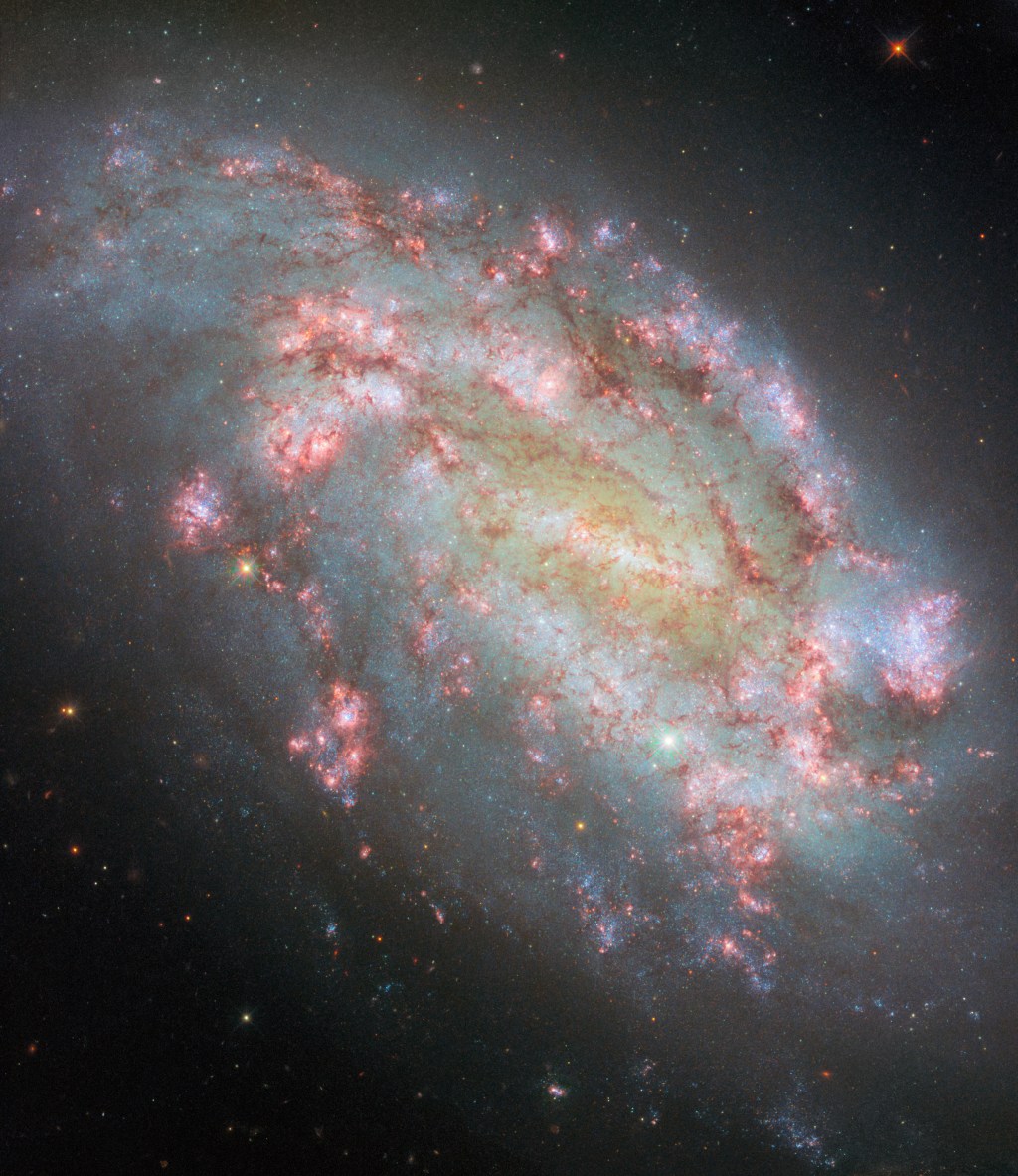This picture is composed of a whopping ten different Hubble images, each filtered to collect light from a specific wavelength or range of wavelengths. It spans Hubble’s sensitivity to light, from ultraviolet through visible light and into the near-infrared spectrum. Capturing such a wide range of wavelengths allows astronomers to study information about many different astrophysical processes in the galaxy: one notable example is the red 656-nanometer filter used here. Ionized hydrogen atoms emit light at this particular wavelength, called H-alpha emission. New stars forming in a molecular cloud, made mostly of hydrogen gas, emit copious amounts of ultraviolet light that the cloud absorbs, ionizing the hydrogen gas causing it to glow with H-alpha light. Using Hubble’s filters to detect only H-alpha light provides a reliable way to detect areas of star formation (called H II regions). These regions are visible in this image as bright red and pink patches filling NGC 1559’s spiral arms.
Related Posts

NASA Glenn Seeking Proposals to Support 2024 Events
Oct. 26, 2023 RELEASE: 23-011 NASA’s Glenn Research Center in Cleveland wants to collaborate with organizations across the country to…

Preguntas frecuentes: Estado del retorno de la prueba de vuelo tripulado Boeing de la NASA
Esta historia fue actualizada por última vez el 23 de agosto.Read the article in English here. Los astronautas de la NASA…

Financial Management
NSSC Accounts Payable processes all accounts payable invoices, centrally billed accounts, and government charge card transactions for the Agency. The NSSC…
